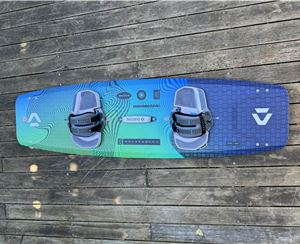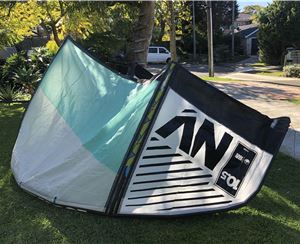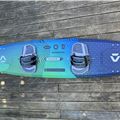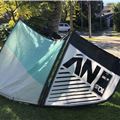2015 Pivot Q&A with Naish Kite Designer, Damien Girardin
Naish have really put a cat amongst the pigeons with the new "2015 Naish Pivot".
What's radical about this new kite, is the quick turning, and apparent lack of tug through the turns, which caters to those folks want smooth turns without getting pulled off their kiteboard - ideal for kitesurfers, who are riding strapless, or in a critical section on the wave.
When did development first begin on the Pivot and why? How does it fit within the lineup?
We began work on the Pivot (Freeride/Wave) in Summer of 2012 with the goal of producing a kite that fit in-between the Park (Freeride/Freestyle) and the Ride (All-around/Freeride). The first prototypes were extremely promising, so we were stoked to have the opportunity to further test a wider range of shapes, foil profiles, bridle configurations, etc. During this phase, we decided to redirect our initial design objective and make a kite that had the ability to make precision turns on a small axis with minimum power increase in the turn, resulting in quick and easy turning, intuitive steering and predictable power development.
What type of rider is the Pivot ideal for?
The Pivot is perfect for a wide range of riders! Its intuitive characteristics make it an amazingly forgiving kite that will make any kiter a better kiter, whether they’re learning their first tacks or jumps, riding their first waves (strapless or with straps), or attempting kiteloops. It features extremely forgiving steering, allowing the rider to focus solely on their performance and nothing more. Our R&D team even felt like kiteboarding became easier because everyone started practicing new tricks with tons of confidence!
How is the Pivot’s overall structure built for freeride riding?
The Pivot was designed with a medium aspect ratio for substantial low-end power, a “sheet-in and go” feel, easy jumping and great upwind performance. It generates a great amount of light wind power while staying extremely manageable in the upper end of the wind range. It also has exceptional upwind ability, which translates into a great ability to fly forward in the wind window.
The leading edge’s shape on the Pivot is also a departure from previous kites. The LE’s diameter has a very low amount of taper, meaning the center of the kite and wing tip area have very similar diameters. This results in a better overall distribution of torque that the rider gives to the kite when steering it, which helps create precision turns with minimal bar input. In addition, the Pivot has a rounded wing tip angled at 55 degrees to assist in easy water relaunch and help transmit the torque from the back steering line by maximizing the amount of force transferred to the entire leading edge.
What about the Pivot also makes it a great wave kite?
All of the characteristics that make the Pivot an easy freeride kite also help make it an exceptional wave kite. There are two types of steering techniques for wave riding. On one side, there are riders that like to “stall” their kite and ride the wave with minimal bar input, letting the kite drift in front of them. On the other side, there is an aggressive steering technique that consists of moving the kite a lot while riding the wave (steering it left/right or looping it).
The Pivot answers both these categories:
-“Park and ride” wave riders (Not referring to the Park and Ride kites): The Pivot has the ability to fly far forward in the window due to its medium aspect ratio and has excellent drifting characteristics thanks to its overall balance and light weight.
-Aggressive steering riders: The Pivot’s ability to turn on a small axis of rotation allows quick, precision turns with a constant pull throughout, allowing the rider to constantly change direction.
Strapless riders will also appreciate the balanced pull between front and back lines. It produces a light pull in the harness with a great amount of depower, avoiding the sudden pull that can sometimes knock riders off their board.
What benefits does the ABS Bridle offer on this specific kite design?
The ABS bridle platform (anti-back stall) is a design that fits in between a static bridle platform (no pulley) and a regular platform (with pulley). The tow point is connected to a pulley that can only travel on a set path, limiting the possibility for the pulley to set itself too far back, which can cause back stall on a kite when it’s over sheeted and hitting a lull at the same time.
What are the Canopy Stabilizers?
We noticed the canopy material on kites (in general) could sometimes wear due to long fluttering periods (typically when the kite is sitting on the beach for a long time or when it is flown depowered for a long time due to overpowered conditions). The new canopy stabilizers are made out of extra layers of T9600® canopy material that are assembled with the main canopy toward the trailing edge area at a 45 degree angle. This limits the amount of flutter and helps stabilize the canopy and prevent the wear line that might otherwise occur on heavily used kites.
















